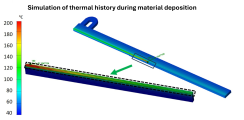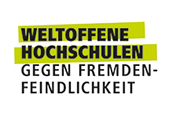3D printing using the fused filament fabrication (FFF) process is based on the layer-by-layer and line-by-line application of molten polymer strands (layers). The desired component geometry is built up gradually, following a predetermined print path. Changes in the order or orientation of the deposited strands often have a direct influence on the resulting mechanical properties of the component.
The key factor for achieving optimal mechanical properties is the bonding strength between the deposited filaments (interlayer adhesion). At the microscopic level, two effects are particularly important: the wetting of the surface and the diffusion of the polymer chains into each other. Temperature (and its distribution) has a significant influence on both processes — the higher it is and the longer it is maintained, the better the filaments can fuse together. However, the path-controlled filament deposition in the FFF process results in a highly complex thermal history — the temperature distribution within the part varies locally, making it difficult to predict the overall mechanical properties of components.
The aim of this project is to use simulation tools to predict the temperature distribution during the printing process. To this end, various thermoplastic materials are tested in our laboratories to determine their thermophysical properties (heat capacity, thermal conductivity, density), which are required for simulating the heat transfer mechanisms. Experimental temperature measurements using pyrometers on real components provide additional validation of the simulation results, taking various process parameters into account. This knowledge of the temperature history in the printing process allows the resulting layer adhesion to be calculated and enables precautions to be taken to optimize the printing strategy.








